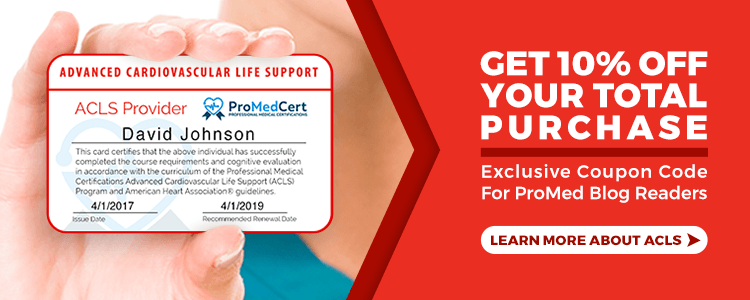Cardiac Arrest vs. Heart Attack vs. Stroke
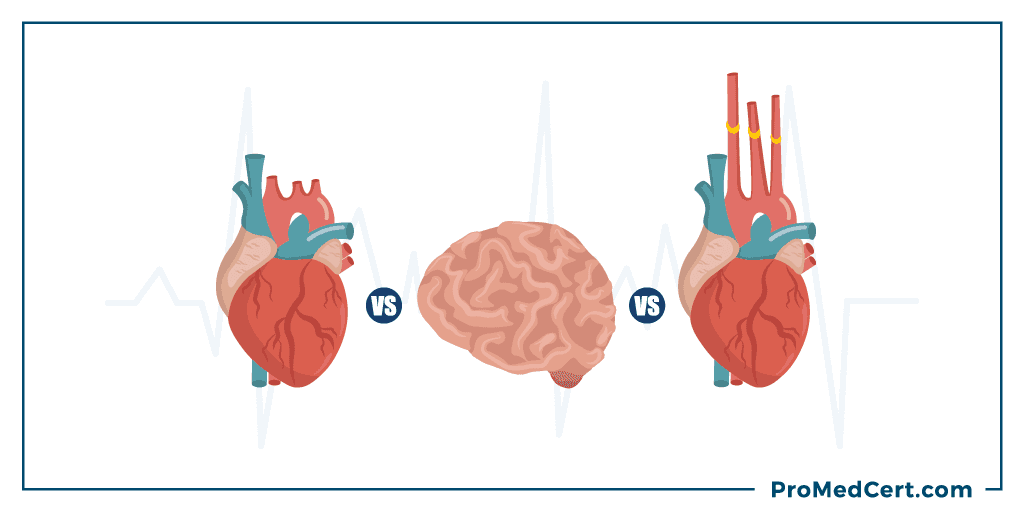
Most people have heard of heart attacks, strokes and cardiac arrest. What they often
don’t know is what the difference is between each of these serious medical
conditions. If you are heading into the health care field, you’ll need to know much
more than the lay person in this regard if you are going to be capable of quickly
and accurately delivering the proper emergency treatment to a patient.
To clear up any lingering confusion, let’s take a look at exactly what goes on with
the body during each of these three medical events, as well as some of the important
signs, symptoms and risk factors you should know about each.
Firstly, it’s important to note that a heart attack isn’t the same thing as cardiac
arrest. You may have noticed that many people use these two terms interchangeably.
This is actually incorrect, and it’s something you should be well aware of if you
are going to be working in the health care industry. The main differentiator to keep
in mind is that a heart attack is caused by a circulation problem while a cardiac
arrest is caused by an electrical problem. We’ll explain this in greater detail
below.
What is a heart attack?
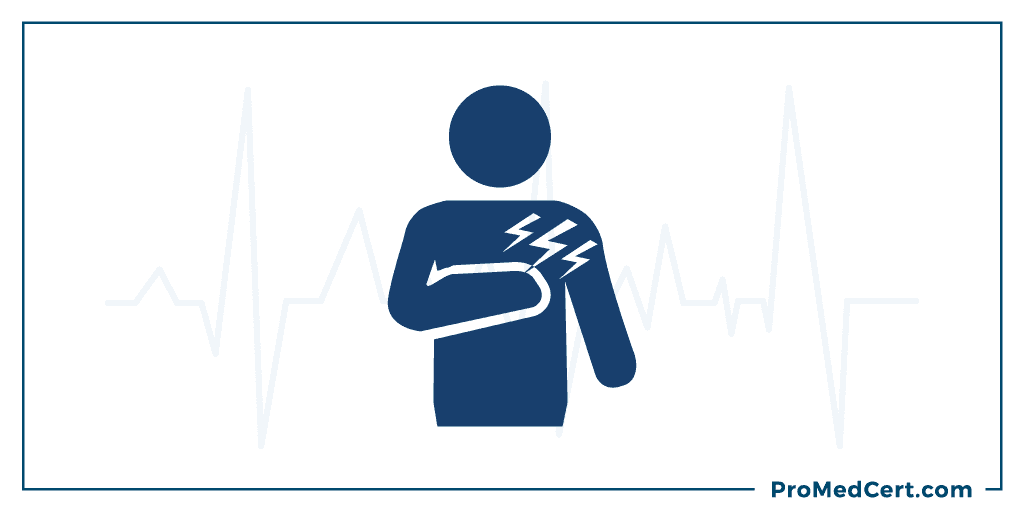
A heart attack occurs when one of the main arteries going to the heart becomes
blocked. This results in the heart not getting the proper amount of oxygen-rich
blood it needs. A heart attack can be caused by a number of things, but it’s
typically the result of plaque buildup in the arteries. When those areas of buildup
break open, they can form a blood clot that ultimately restricts and/or completely
blocks the blood flow to the heart. If the blocked artery is not reopened in a
timely manner, the section of the heart that is not receiving adequate blood flow
could begin to die.
Some of the common signs and symptoms that indicate someone is experiencing a heart
attack include sweating, shortness of breath, intense discomfort in the center of
the chest or other areas of the upper body, and bouts of nausea and/or vomiting.
Symptoms may come on immediately, however, more often than not, they may persist for
hours, days or even weeks leading up to the actual heart attack. Unlike cardiac
arrest, the heart does not stop beating during a heart attack, but it still requires
immediate medical attention because the longer a person goes without treatment, the
more serious the damage.
It’s important to point out that men and women tend to experience heart attacks
differently. For instance, a male patient may experience pain in the left arm while
a female may experience feelings of discomfort in her abdomen, back or even her jaw.
Because the symptoms women experience are often less intense, they can sometimes be
mistaken for other, less serious health problems, such as heartburn. Anyone
suspecting that they or someone else may be suffering a heart attack should call 9-
1-1 immediately.
Treating a heart attack involves unblocking the clogged artery. As such, a common
treatment plan may include the use of clot-fighting medication, like tenecteplase.
For more severe or urgent cases, catheterization and stent placement may be
required.
What is cardiac arrest?
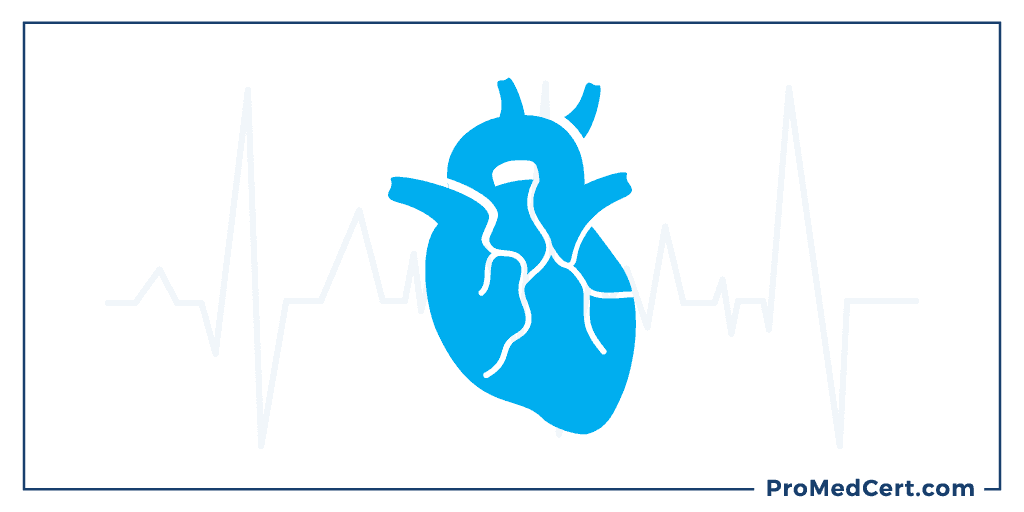
Cardiac arrest occurs when the heart stops beating completely or is exhibiting a
dangerously unhealthy rhythm. These events are triggered by electrical malfunctions
which cause the heart to cease beating or beat irregularly. Cardiac arrest is
critically dangerous because when the heart’s pumping action is disrupted, it cannot
deliver the necessary blood to the brain, lungs and other vital organs. A cardiac
arrest can occur as a result of a heart attack, however, it can also be caused by a
whole host of other issues, such as trauma, infection, sepsis or a pulmonary
embolism.
Unlike a heart attack, cardiac arrest occurs in an instant, which means there may be
few telltale signs or symptoms to watch for. Seconds after suffering a cardiac
arrest, a patient may experience dizziness, start gasping or stop breathing
altogether and lose consciousness. If a victim of cardiac arrest does not receive
urgent treatment, death can occur in just minutes.
In the event of a cardiac arrest that occurs outside of a hospital or health care
facility, 9-1-1 should be called immediately. The victim should then begin receiving
CPR right away to improve his or her chances of survival while awaiting help. If an
automated external defibrillator (AED) is available, it should be used as quickly as
possible. Again, the sooner the proper treatment is rendered, the greater the
chances of a positive outcome for the patient.
What is a stroke?
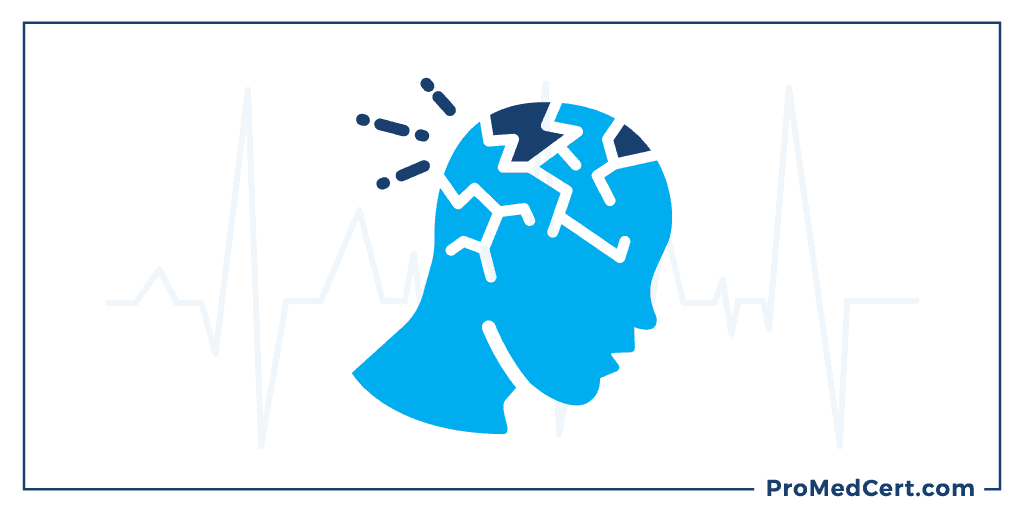
A stroke occurs when blood flow to the brain is blocked. This is typically caused by
a blood vessel that has burst or become clogged. There are two common types of
strokes: hemorrhagic and ischemic. Hemorrhagic strokes involve bleeding on the brain
caused by a ruptured blood vessel. As the bleeding occurs, it damages the brain. An
ischemic stroke occurs when a blood clot cuts off the supply of blood to a
particular area of the brain. The longer that part of the brain goes without blood
flow, the more likely it will be to shut down and die.
Symptoms of a stroke may vary, but often include a sudden and severe headache,
numbness or weakness on one side of the body, confusion, difficulty speaking and/or
understanding people, loss of balance, sudden vision changes and paralysis of the
face, arm or legs. It’s important to note that brain cells can begin to die within
minutes of a stroke occurring. As such, immediate medical attention is necessary.
Treatment will depend on the type of stroke in question. With ischemic strokes,
doctors will need to go after the blood clot. If caught early enough, this can be
done non-invasively through the use of a medication called TPA. Emergency surgery
for catheterization and stent placement may also be required. With a hemorrhagic
stroke, doctors must control the bleeding. This involves managing the blood pressure
and flushing any blood thinners from the body. Stroke survivors may recover
completely or may have lingering symptoms for the rest of their lives.
Risk Factors
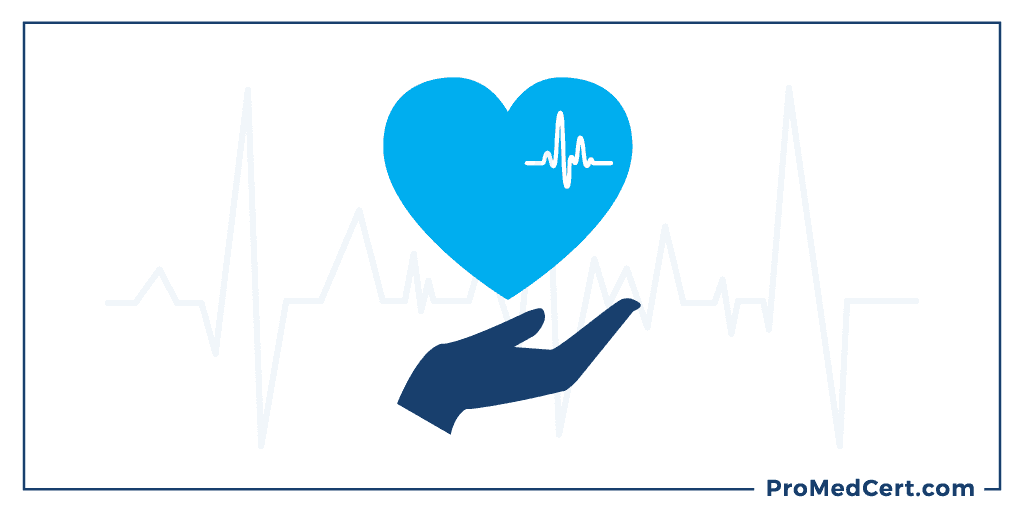
While heart attacks, cardiac arrests and strokes are entirely different conditions,
they do share some similarities, particularly in terms of risk factors. High blood
pressure, high cholesterol, smoking, obesity and type 2 diabetes can all increase
the likelihood of someone experiencing one or more of these events. All three
conditions also share the need for immediate and proper medical attention. It could
literally mean the difference between life and death.

